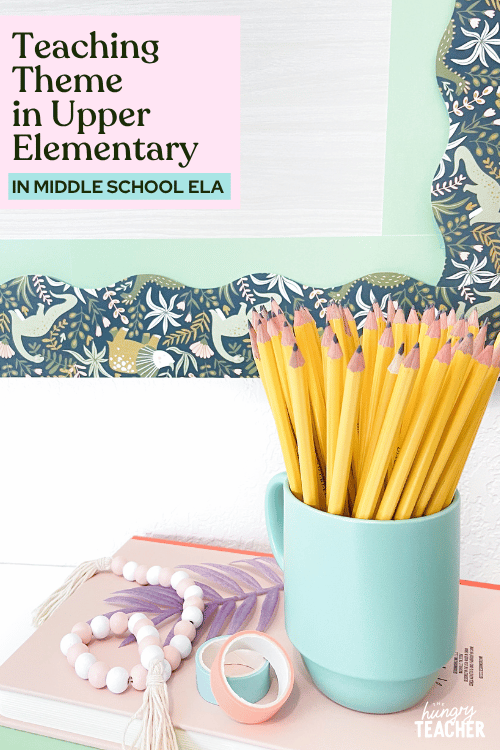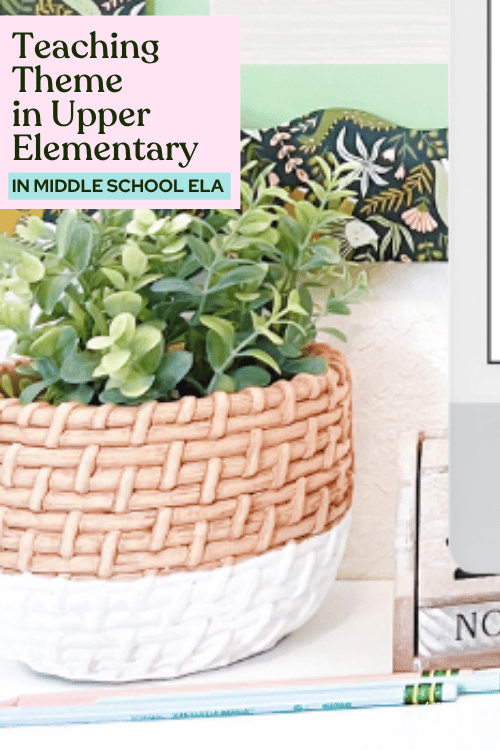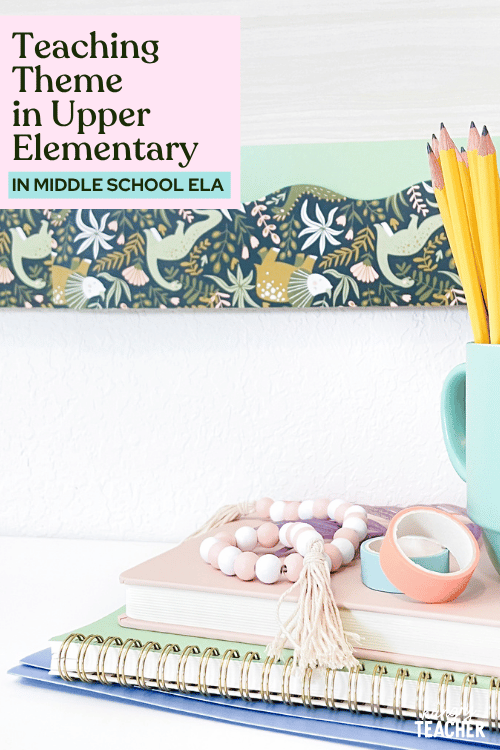Theme is a complicated concept for upper elementary and even middle school students. Some teachers think about theme as merely a subject or topic. However, it’s so much more! Topics are just the starting point to lead to the lesson or the message – the theme. Use these strategies for teaching theme in upper elementary to help your learners go from surface meaning to lesson learning!

Theme = The Message
I always tell students that the theme is the message or lesson of the story. In fact, THEME is right in the words “The Message”! The theme of the “Wizard of Oz”, for example, is not “family” or “home”. It’s the message that Dorothy learns about family or home, “There is no place like home.”
Start by talking about the topic. In “Wizard of Oz”, that may be home or family. Then ask your students, “What do you learn about that topic?” In this case, your students may say that “There is no place like home” or “Family comes first.” Using popular movies or common stories will help students make those connections easily.

Start with a well-known story.
When teaching theme in upper elementary, start with a story that most of your students are familiar with. Teaching the initial concept of theme is easier when students already understand and comprehend the text. For example, share a children’s book like “The Giving Tree” or a parable such as “The Tortoise and the Hare”. Even if the text is new to some students, the topics are basic and even struggling readers can go from an topic to a lesson (theme).
Using prior knowledge to understand theme, either from personal experiences or well-known stories, is part of the lessons provided in the theme unit for upper elementary to help your students activate background knowledge in order to understand theme.

Provide textual evidence to support theme.
One thing that I emphasize with students is that there is not one theme to a story. In fact, if you can provide textual evidence to support the theme of the story, you’re correct! Of course, on standardized assessments, typically the multiple choice answers will have one theme, but if students know how to find evidence in the text to support theme, they’ll be more likely to get the correct answers.
Using the theme unit to teach theme in upper elementary ELA, have your students come up with their own themes for texts using textual evidence to support their answers. Next, your students can work in small groups and collaborate with one another, adding to their bank of evidence and even finding additional themes.
Theme can be an advanced and often overwhelming topic for upper elementary and middle school readers. By focusing on prior knowledge and helping students make connections to the texts they’re reading, theme can be just as accessible as main idea! The richness of theme helps students grow from consuming literature to experiencing all it has to offer. How can you teach theme in upper elementary to engage your learners?



I just signed up to access the free library! I love your stuff.
It says I need a password. Does that come later? or Must I subscribe to teachers pay teachers?
Denise